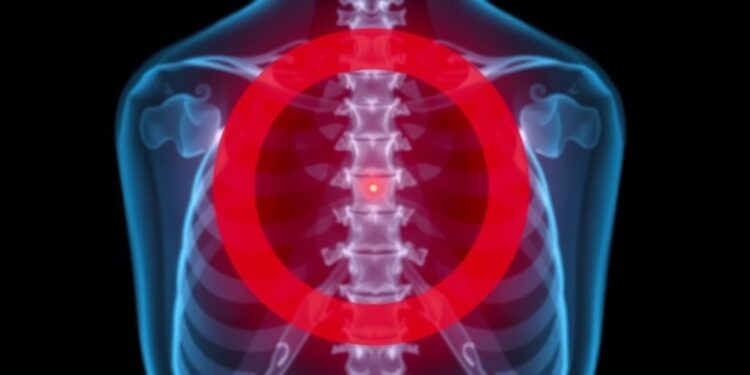
The demographic landscape is shifting, and with it, an impending health crisis looms—osteoporosis-related fractures are increasingly becoming a significant burden on healthcare systems. This emergence of issues revolving around fragility fractures, particularly hip fractures, has been underscored in a recent Perspective article published in the New England Journal of Medicine. The article illustrates the pressing need for specialized interventions like Fracture Liaison Services (FLS), designed to manage and mitigate the risks associated with osteoporosis.
Osteoporosis, characterized by decreased bone density and increased fragility, presents a severe risk to older populations. According to the World Health Organization, osteoporosis is not merely a medical condition; it has evolved into a global health crisis. The implications of osteoporosis extend far beyond mere fractures. Mortality rates following a hip fracture can tragically vary from 14.4% to 28.3% within the first year for community-dwelling individuals, and the numbers escalate dramatically to 55% for those residing in long-term care facilities. These staggering statistics reinforce the critical need for timely interventions.
In response to this urgent need, FLS programs have been established. They aim to close the gap between acute care for fractures and long-term management of osteoporosis. FLS programs are innovative and structured to systematically identify and assess patients following a fragility fracture. The mechanisms of these services ensure that patients receive comprehensive evaluations, including pharmacological treatments to strengthen bones and lifestyle modifications focused on fall prevention and exercise.
The Perspective details various successful models of FLS, highlighting the multifaceted approach they undertake. The services can include medication management to bolster bone density, alongside physical therapies that encourage safer movement patterns to prevent future falls. The harmonization of outreach and coordination among various healthcare providers allows for tailored care that meets patient-specific needs. Remarkably, studies have indicated that FLS programs can reduce the incidence of secondary fractures by up to 74% during the initial year after treatment and by 32% subsequently, demonstrating a significant impact on patient recovery.
Moreover, the economic ramifications of implementing FLS are noteworthy. The article points out that for every dollar invested in FLS programs, a return of $10.49 is realized. Health systems that have successfully integrated these services, such as Kaiser Permanente, have documented a substantial decrease in fracture rates, indicating not just medical efficacy but economic viability. This financial upside suggests that investment in such services could alleviate immense pressures on healthcare infrastructure while improving patient outcomes and enhancing quality of life.
Yet, the startling reality is that despite the proven effectiveness of FLS, fewer than 20% of patients who suffer fragility fractures receive the recommended pharmacological treatments for osteoporosis. This gap in care highlights the significant challenges that exist within post-fracture management systems. As it stands, the global incidence of hip fractures is projected to nearly double by 2050 if effective interventions are not implemented.
Douglas P. Kiel, a senior scientist at Hebrew SeniorLife’s Hinda and Arthur Marcus Institute for Aging Research, points out that the multifaceted nature of fragility fractures necessitates cross-specialty collaboration including geriatrics, orthopedics, and rehabilitation. Countries such as the United Kingdom, Australia, and Japan have successfully adopted FLS to combat similar public health concerns, leaving the U.S. at a critical juncture. The lack of reimbursement for FLS services in the U.S. acts as a deterrent for healthcare institutions, creating a challenging environment for the establishment and sustainability of these vital programs. The absence of financial backing represents a significant missed opportunity in preventing fractures and enhancing patient care.
Realizing the full potential of FLS in the U.S. necessitates a concerted effort from various stakeholders featuring robust advocacy initiatives. Organizations such as the American Society for Bone and Mineral Research and the Bone Health and Osteoporosis Foundation are tirelessly working to advocate for Medicare reimbursement for FLS. This financial support could be crucial in incentivizing healthcare providers to develop and maintain these programs, ultimately aiming to reduce the national burden of osteoporosis-related fractures significantly.
Dr. Kiel emphasizes that securing adequate financial coverage for FLS programs, along with strategic advocacy from scientific societies and governmental bodies, could lead to effective secondary fracture prevention. This enhances the quality of life for patients who are at risk of subsequent fractures, showcasing the wider social impacts that effective healthcare can deliver.
The collaborative nature of FLS not only serves the immediate needs of patients but also represents an evolving paradigm in healthcare. As this model gains traction, it holds the promise of transforming how osteoporosis is managed across different healthcare settings. By integrating clinical expertise across specialties, the coordinated efforts seen in FLS can ensure that patients receive comprehensive care that addresses both their immediate and long-term health needs.
In conclusion, the call to action is clear. The integration of Fracture Liaison Services into healthcare systems can no longer be seen merely as a recommendable choice; it has transformed into a necessity, given the sociopolitical and economic implications of osteoporosis-related fractures. The future hinges on whether healthcare providers, payers, and policymakers can recognize the value of investing in preventative models that promote healthier aging and optimize the management of osteoporosis.
Subject of Research: Fracture Liaison Services (FLS) and Osteoporosis
Article Title: Coordinating Multidisciplinary Care — Improving Outcomes after Fragility Fractures
News Publication Date: 4-Jan-2025
Web References: https://www.nejm.org/doi/full/10.1056/NEJMp2409086
References: 1. World Health Organization. Osteoporosis. 2. Hinda and Arthur Marcus Institute for Aging Research.
Image Credits: Not applicable
Keywords: Osteoporosis, Fracture Liaison Services, Fragility Fractures, Hip Fractures, Healthcare Systems, Preventative Healthcare.





